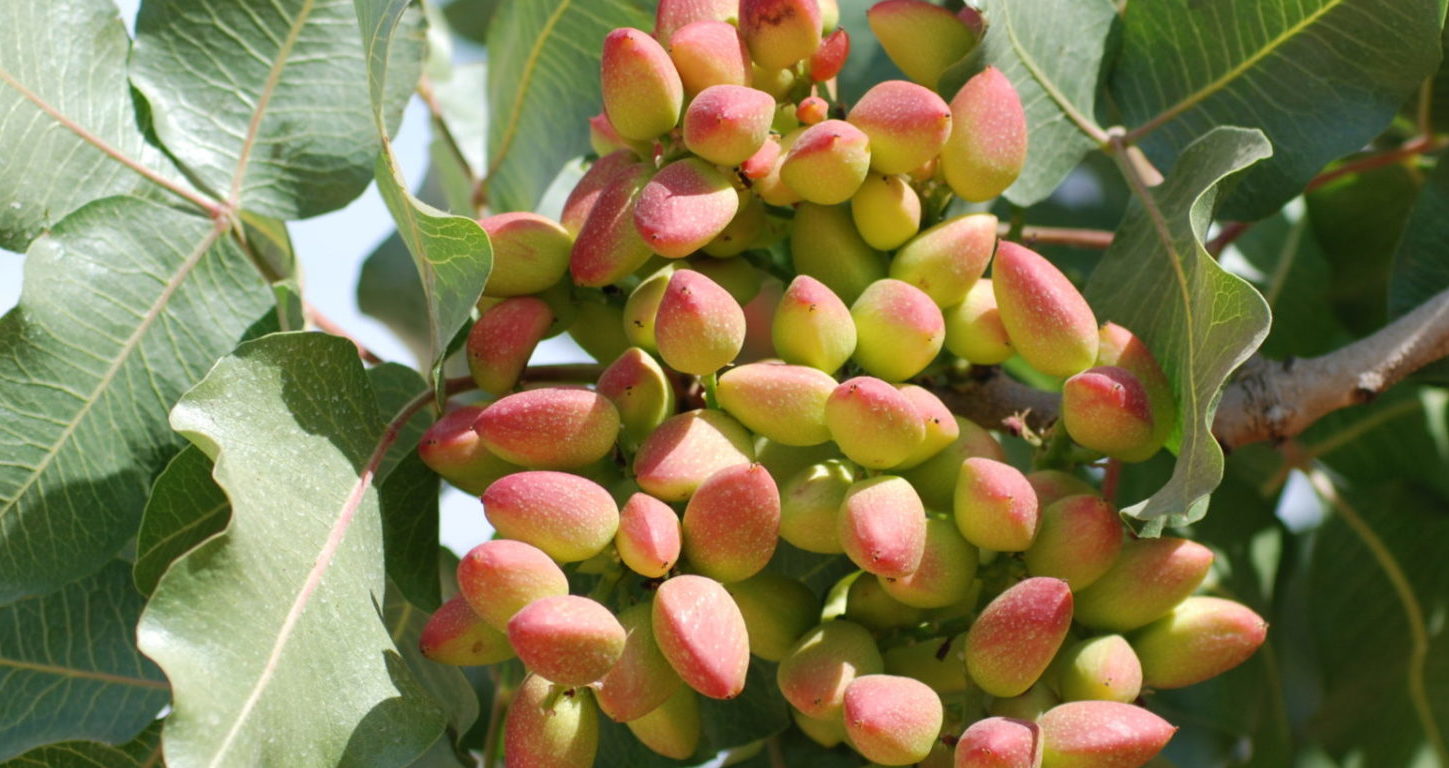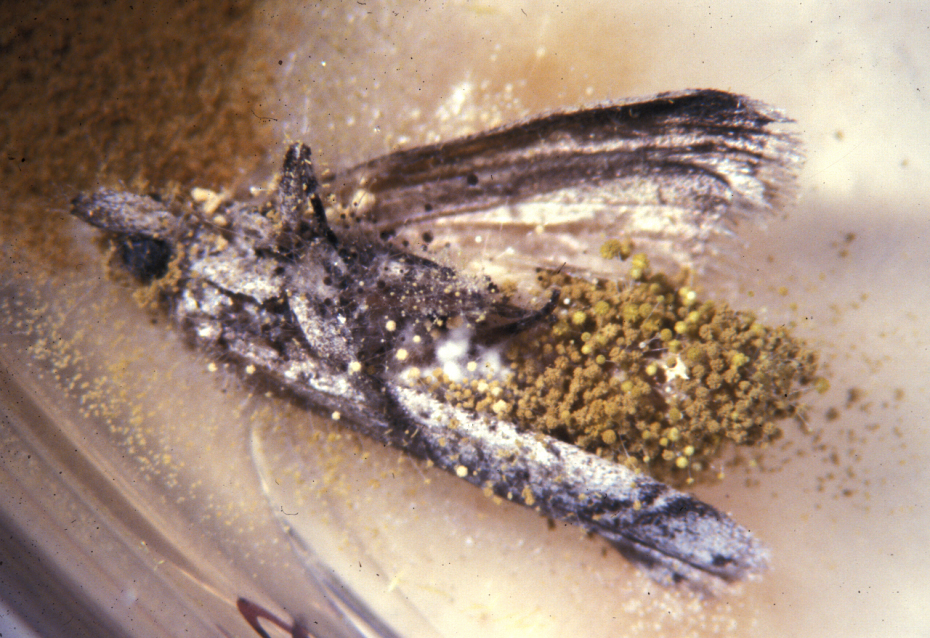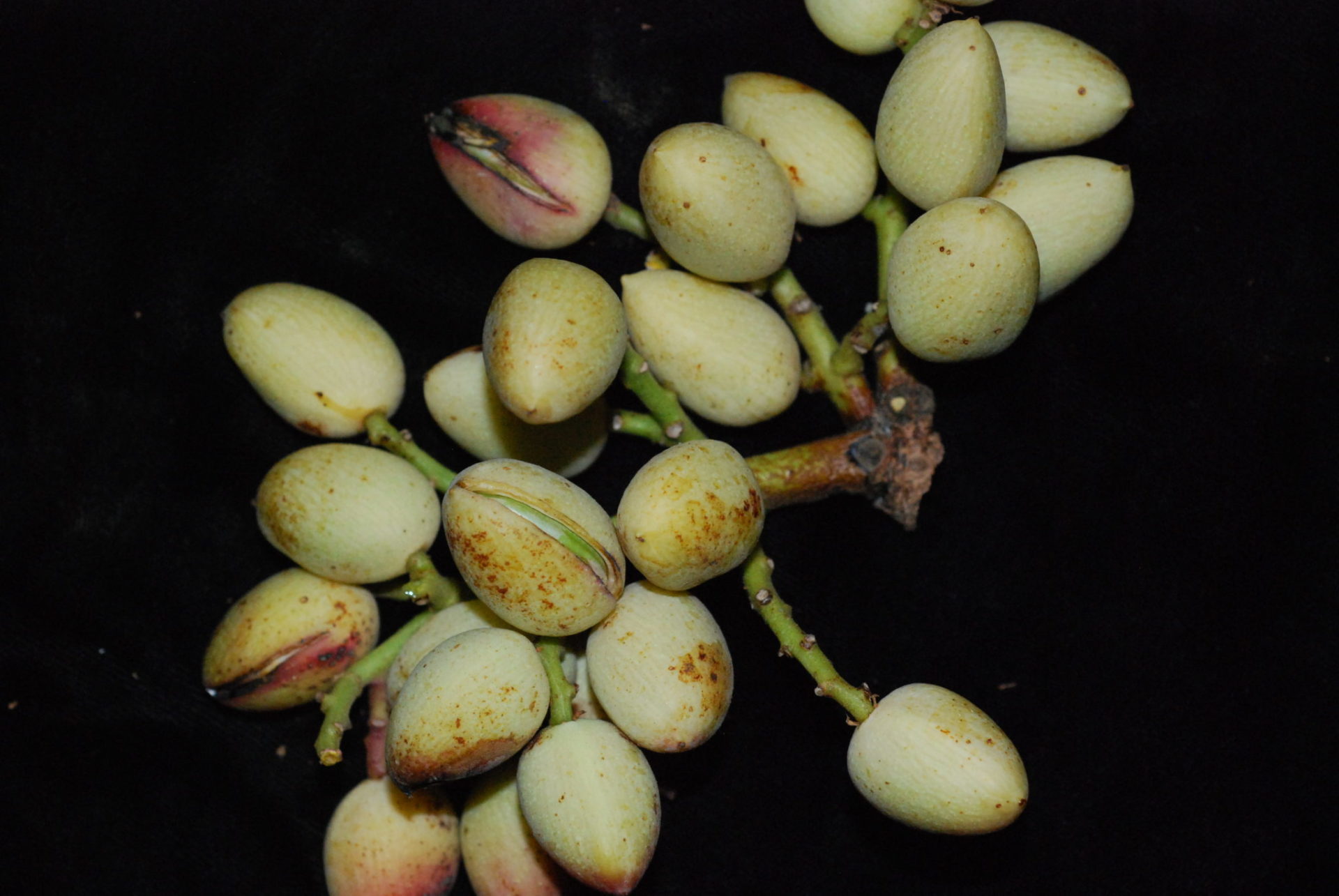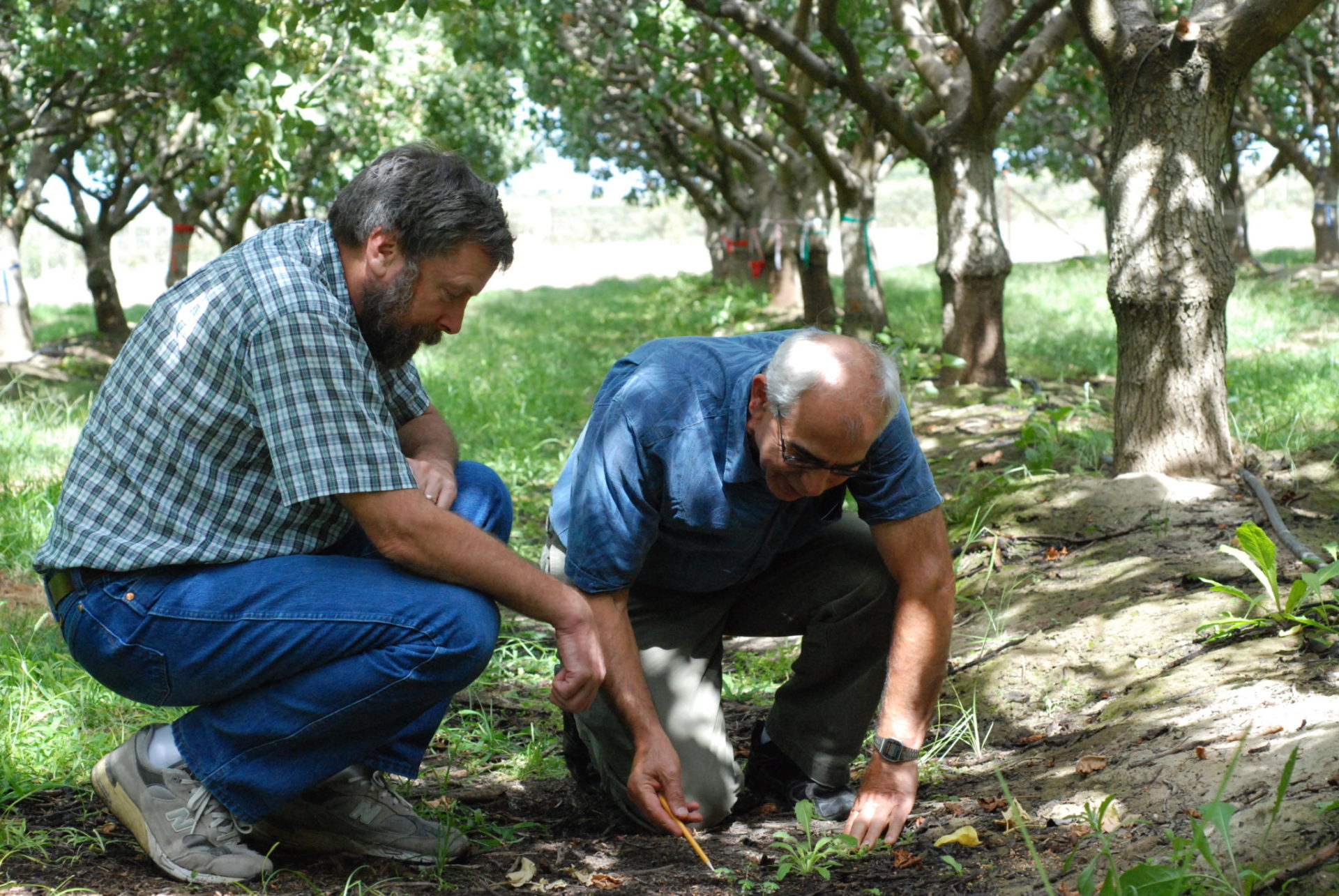
After more than a decade of studying aflatoxin contamination in pistachios, UC Davis Plant Pathologist Thomis J. Michailides, based at the Kearney Agricultural Research and Extension Center in Parlier, has come up with a list of practices to reduce the contamination.
The list includes multiple practices from irrigation management and timely harvest, to winter sanitation and insecticidal control. One key goal stands out for Michailides: if growers can minimize early splits to reduce damage from navel orangeworm (NOW), they will dramatically limit aflatoxin contamination in pistachio orchards.
By themselves, early splits lead to increased aflatoxin contamination in pistachios, Michailides said. But because they create an ideal substrate for NOW egg laying, which can lead to as many as three more life cycles for the pest during the growing season, the main drawback to early splits may be their propensity to increase NOW populations.
Recent research has shown that NOW not only inflicts feeding damage on nuts, which increases susceptibility to aflatoxin contamination, but also increases aflatoxin levels by spreading spores of the fungi that produce aflatoxin around pistachio trees.
“These results are the first results that justify why the NOW control – the sanitation and the insecticide application – is so important,” Michailides said during a presentation at the 2020 Pistachio Day, held in January in Visalia, Calif. “Because in addition to the damage caused by the larvae, (the moth) is spreading the pathogens that result in aflatoxin contamination upon infection of nuts.”

Research also has found that not only does NOW damage increase the number of positive samples of aflatoxin in pistachio orchards, but also the amount of aflatoxin in the individual positive samples, Michailides said.

Aflatoxin is a naturally occurring carcinogenic compound produced by two fungi, Aspergillus flavus and Aspergillus parasiticus. The fungi live in soil and produce microsclerotia, which produce spores that enter tree canopies on the breeze and can infect nuts. Research has found that pistachios are particularly susceptible to contamination by aflatoxins.
“It is a major, major headache in pistachios,” said Bob Klein, manager of the California Pistachio Research Board. “Testing alone costs us millions upon millions of dollars.”
Sorting Costs Substantial
Sorting costs also are substantial, Klein said, and not just because of the labor. “You can’t see the aflatoxin damage, so you end up sorting out any nut that has any sort of defect, and those defects may not have anything to do with aflatoxin. But you cannot take a chance. For all you know, you are pulling out 10 nuts that have no aflatoxin to get to one that does.”
Also, Klein said, a clean test doesn’t ensure that lots won’t be rejected.
“Because of the way aflatoxin contaminated nuts are distributed in a lot, there is a high degree of variability in testing,” Klein said. “So, you can test all you want, but that is no guarantee. You can still end up with a single contaminated nut in the sample, and you are out a lot of money.”
In the U.S., the allowable threshold for aflatoxin in pistachios for direct consumption is 15 parts per billion (ppb) for total aflatoxin and 10 ppb for B1 aflatoxin, which has been linked to liver cancer. In Europe, the allowable thresholds are 10 ppb for total aflatoxin and 8 ppb for B1.
Among the steps on Michailides’ lists for reducing aflatoxin levels in pistachios, several are aimed at reducing early splits, including choosing rootstock less susceptible to early split. In his research, Michailides has found that the UCB1 rootstock is least prone to early split, followed by the PG1 rootstock.
Maintaining sufficient irrigation, particularly during shell development in May and early June, also is an important step. “We determined that just by skipping one irrigation in early May that we increased the early splits,” he said. “So, it is very critical to irrigate in that stage when the shell develops.”

In some cases, susceptibility to early splits is outside a grower’s control. Researchers, for example, have found that pistachio orchards in Kern County had naturally lower levels of early splits than orchards in Fresno and Madera counties. “We found that not only are there differences in rootstock, but there are also differences among the locations where these trees are grown,” Michailides said.
Also, he said, research has shown that off years have higher levels of aflatoxin levels than on years. In the research, one nut in every 5,000 tested showed levels above a certain threshold in off years, compared to one nut in every 20,000 tested in on years.
Winter Sanitation is Critical
Sanitizing orchards in the offseason also is a critical step that growers can take to minimize aflatoxin levels, Michailides said. Mummies on trees and orchard floors create overwintering habitat for NOW, and the residue is ideal for growth of aflatoxigenic fungi that produce microsclerotia. These microsclerotia eventually develop spores that reach the tree canopy, infect nuts and produce aflatoxin.
Applying insecticides in a timely and effective fashion to control NOW is high on Michailides’ list, as is harvesting nuts in a timely fashion. Delaying harvest, Michailides said, provides extended opportunities for the NOW to spread spores of the aflatoxin fungi, infest more nuts and increase aflatoxin contamination.
Use of the biocontrol product AF36 Prevail, an A. flavus that does not produce aflatoxin and can displace the aflatoxin-producing fungi when activated by irrigation water, also can help lower aflatoxin levels in pistachio orchards, Michailides said. The product needs water to sporulate, high temperatures and typically needs breezes to carry it into tree canopies, but, despite these limitations, it has provided some positive results. In research prior to the product’s 2012 registration, researchers were able to displace 95 percent of the toxigenic strain of A. flavus in the soil when using AF36 Prevail. That translated to a 40-percent reduction in positive samples of aflatoxin in the nuts.
Michailides believes that the product could be more effective if growers could get more to sporulate and reach tree canopies. As evidence, in cotton, growers have been able to achieve nearly 100-percent displacement of the toxigenic strain of A. flavus through use of AF36 Prevail and an 80-plus percent reduction in aflatoxin levels.
Climatic conditions help explain the higher displacement levels in crops such as cotton and corn, Michailides said, and crop height helps explain why the product’s atoxigenic spores are more effective in lowering aflatoxin levels in the plants. “Because the canopy of cotton and corn are very low, it is easier to get the atoxigenic spores on the canopy of those crops in comparison with the canopies of trees,” Michailides said.
Michailides noted a new biocontrol product manufactured by Syngenta, Afla-Guard GR, which is not yet registered for use in California pistachios, sporulates in dryer soils and at lower temperatures when compared with the sporulation of AF36 Prevail.
“Hopefully we will get the registration of this product either this year or next year,” he said.
Going forward, Michailides said researchers in his laboratory are working on different application methods of the nontoxic strains of Aspergillus flavus. To date, research has shown that when applying A. flavus directly to tree canopies with a polymer, performance is enhanced. Without the polymer, it is not.
The bottom line to date appears that the best tactic for pistachio growers to reduce aflatoxin levels is to avoid early splits and do all they can to minimize navel orangeworm populations.
“The early splits are what I consider the Achilles heel for aflatoxin contamination,” Michailides said. “These are the nuts on a pistachio tree which will be infected by NOW first.”










